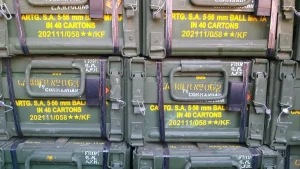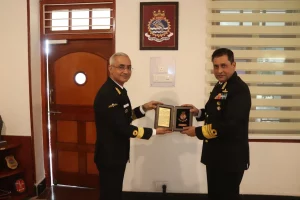The Indian Air Force Common Admission Test (AFCAT) is a highly competitive examination that aims to select the best candidates for various branches of the Indian Air Force. AFCAT 1 2024 is just around the corner, and aspirants are gearing up for this challenging test. In addition to the traditional subjects, candidates must also be well-versed in Static General Knowledge (GK), including scientific inventions, which is an important part of the AFCAT syllabus.
For defence aspirants, knowing about scientific inventions, especially those related to defense and aviation, can be a valuable asset. In this article, we will explore some significant scientific inventions that have had a profound impact on the field of defense and aviation. These inventions not only played a pivotal role in shaping the modern military landscape but also continue to influence defense strategies and technologies.
- Radar (Radio Detection and Ranging):
Radar is one of the most critical scientific inventions in the history of military and aviation. It is a technology that uses radio waves to detect and locate objects, including aircraft and ships. Radar systems provide real-time information on the position, speed, and direction of potential threats, making it an invaluable tool for air defense and surveillance. The invention of radar is attributed to Sir Robert Watson-Watt, and it played a crucial role during World War II in detecting enemy aircraft.
- GPS (Global Positioning System):
The Global Positioning System is a satellite-based navigation system that has revolutionized how military forces operate. GPS provides precise location information, enabling aircraft, ships, and ground forces to navigate accurately and coordinate their actions. It has become an essential tool for targeting and precision-guided munitions, enhancing the effectiveness of military operations.
- Stealth Technology:
Stealth technology is a set of techniques and materials used to make military aircraft less visible to radar and other detection systems. The development of stealth technology has had a significant impact on modern aerial warfare. The concept of “stealth” was first introduced by Lockheed Martin’s Skunk Works division, which produced the F-117 Nighthawk, the world’s first operational stealth aircraft.
- Drones (Unmanned Aerial Vehicles):
Unmanned Aerial Vehicles (UAVs), or drones, have become indispensable in modern military operations. These remotely piloted aircraft are used for surveillance, reconnaissance, and even combat missions. The development of drone technology has greatly enhanced the military’s ability to gather intelligence and conduct precise strikes while minimizing the risk to human personnel.
- Nuclear Power for Submarines:
The use of nuclear power in submarines, such as the U.S. Navy’s Ohio-class submarines, has extended their operational capabilities and endurance. These submarines can stay submerged for extended periods, providing a strategic advantage in both deterrence and offensive capabilities. The development of nuclear-powered submarines represents a significant leap in naval technology.
- Night Vision Technology:
Night vision technology enables military personnel to see in the dark, providing a tactical advantage during night operations. It has been used extensively by ground forces, special operations units, and even pilots. The development of night vision technology has significantly improved situational awareness and the ability to conduct covert operations.
Conclusion:
A sound knowledge of scientific inventions related to defense and aviation is crucial for AFCAT aspirants. These inventions have not only reshaped the military landscape but continue to drive innovation and strategy in the defense sector. Understanding their significance and impact is essential for a successful career in the Indian Air Force and other defense organizations. In a rapidly evolving world, staying up-to-date with advancements in science and technology is vital for those who aim to protect their nation and serve in the defense forces.



















